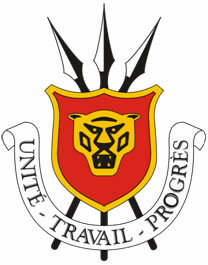Landlocked, Burundi is located in east-central Africa, in the Great Lakes region, its territory borders Rwanda (to the north), Tanzania (to the east) and the Democratic Republic of Congo (the West). Burundi means “the Rundi people”. Until the end of the 19th century, Rwanda and Burundi formed a single nation, later fragmentation of the territory occurred, and each country became autonomous.
Belgium, after the German defeat in World War I, took over the colonization of Burundi, which was previously in German hands. Burundi's independence was won in 1962. Since then, a series of conflicts involving Tutsi and Hutu ethnic groups have occurred in the country, resulting in hundreds of thousands of deaths and refugees. This same fact is experienced in neighboring Rwanda (see the movie Hotel Rwanda).
Most of the population is illiterate, life expectancy at birth is only 48.9 years. These data make the country hold the fourth worst Human Development Index (HDI) in the world, according to a ranking released in 2010 by the United Nations (UN).
The national economy, one of the poorest on the planet, is based on the cultivation of coffee, tea and cotton. Agriculture is the activity that employs the majority of the population, accounting for approximately 40% of the Gross Domestic Product (GDP). Industrial activity is found only in the capital, Bujumbura, where there is a small manufacturing sector.
The country needs foreign aid, the main aid coming from Belgium, France and Germany.
Do not stop now... There's more after the advertising ;)

Burundi Coat of Arms
Burundi data:
Territorial extension: 27,834 km².
Location: Africa.
Capital: Bujumbura.
Tropical weather.
Government: Presidential Republic.
Administrative division: 15 provinces subdivided into districts.
Language: French and Kirundi (official).
Religion: Christianity 91.7% (Catholic 57.2%, no affiliation 14.7%, Protestant 12%, other 7.8%), traditional beliefs 6.7%, other 1.5%, no religion and atheism 0 ,1%.
Population: 8,303,330 inhabitants. (Men: 4,069,991; Women: 4,233,339).
Ethnic Composition: Hutus 85%, Tutsis 14%, Pygmies 1%.
Demographic density: 298 inhab/km².
Average annual population growth rate: 3.3%.
Population residing in urban areas: 10.68%.
Population residing in rural areas: 89.32%.
Undernourished population: 63%.
Life expectancy at birth: 48.9 years.
Households with access to drinking water: 71%.
Households with access to a health network: 41%.
Human Development Index (HDI): 0.282 (low).
Currency: Burundi Franc.
Gross Domestic Product (GDP): US$ 1,004 million.
GDP per capita: US$ 118.
External relations: World Bank, IMF, WTO, UN, AU.
By Wagner de Cerqueira and Francisco
Graduated in Geography
Brazil School Team
countries - geography - Brazil School
Would you like to reference this text in a school or academic work? Look:
FRANCISCO, Wagner de Cerqueira and. "Burundi"; Brazil School. Available in: https://brasilescola.uol.com.br/geografia/burundi.htm. Accessed on June 28, 2021.
